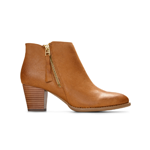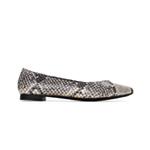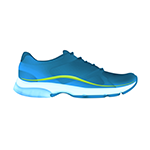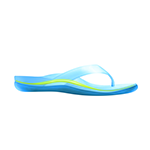HOW TO FIND THE BEST ORTHOTIC INSOLES

The range of insoles (orthotics) available on the market can be quite daunting and make the decision of which one to buy difficult for the general public who do not have the specific knowledge.
Therefore, an appreciation of what one is trying to achieve with orthotic arch support and how different materials and sizes can affect that choice can help the decision-making process.
The key factors to consider are:
- Why do we use orthoses?
- How do orthoses work?
- What do the materials in orthoses do?
- How do I choose which one?
Why Do We Use Orthoses?
Orthoses are arch support inserts that can be used to make shoes footwear more comfortable or, more commonly, to help reduce pain in the foot, ankle, leg, knee, hip and lower back. As a podiatric surgeon, I will make specific prescriptions for orthoses but often combine these with exercises such as stretching and strengthening and advice about activity levels. These prescription orthotics may be modifications to over-the-counter orthoses or custom orthotic inserts that have been manufactured for the individual.
However, many people will try over-the-counter orthoses prior to seeing a professional and many will benefit from the extra foot support.
Some people find they only need to use orthoses until the foot or arch pain has settled and can then remove them. This is more likely if they have modified their activity levels and performed an appropriate stretching and strengthening program. However, some people find that they need to use orthoses for the longer term to find foot pain relief. Even more, some find they need plantar fasciitis taping to help the arches of their feet.
How Do Orthoses Work?
It is easy to explain how orthoses work by considering the alignment and position of the foot. Whilst orthoses can change the position of the foot, the degree by which this is achieved is variable between individuals and is not consistent.
It is therefore easier to consider how orthoses provide foot support and affect the pressure beneath the foot. If you consider that when you are walking, the pressure points beneath the foot will change through the step. Depending on how high the pressure is beneath certain areas can determine pain in that area or alternatively, load on the joints or the soft tissues (i.e. ligaments, tendons and muscles) that may be stressed by that pressure.
The center of pressure is effectively the midpoint or balance point (think of balancing a pencil on your finger).
Orthoses create more supportive shoes by helping to modify pressure by cushioning beneath the foot, increasing the surface area (i.e. more of the foot is in contact) or applying pressure directly to the foot which changes the position of the centre of pressure. In other words, if there is too much pressure on the outside of the foot, placing pressure on the inside of the foot would help to balance.
Generally speaking, problems that occur on the inside of the foot and ankle (i.e. pain in the big toe joint, arch, inside of the ankle or lower leg) can be caused by too much pressure beneath the outside of the foot causing strain to the inside. Similarly, problems on the outside of the foot and ankle can be caused by too much pressure on the inside of the foot.
So if you consider orthoses to help to balance the pressure, it is easier to decide which insoles may help your foot problem.
What Do the Materials and Orthoses Do?
There are essentially 3 ways orthoses can change the pressure:
- The shape of the orthoses.
- The stiffness (rigidity) of the materials.
- Altering the friction applied to the foot.
Generally, we focus on the shape and stiffness of the orthoses. To explain how the materials can affect this, we can analyze the materials used in the new Vionic insoles.
The extended slim fit insole contains 2 types of foam which help with shock absorption and pressure reduction. The arch is slightly raised which will help to reduce pressure by increasing the contact area of the foot. However, these materials are softer and therefore have more of an effect on cushioning and less of an effect on changing the center of pressure.
The relief insole has 3 types of foam; the main shoe insole has a firmer material with a higher arch profile and therefore more stiffness. There is a softer foam beneath the center of the heel and the ball of the foot for a cushioning effect and a different density foam beneath the big toe joint which helps to improve the function of the big toe and therefore the foot. As a result, this provides a combination of cushioned arch support, pressure reduction, and the ability to modify the center of pressure.
There is also a ¾ length version of this shoe insert, if there is less room in a shoe.
The active orthoses have a similar shape to the relief but now have a reinforced three-quarter length shell to increase the stiffness. The full length foam is of a high density but it still has the cushioning beneath the central heel and the ball of the foot as well as the adaptation for the big toe joint. Whilst this does provide cushioned arch support, the increased stiffness means it can have a bigger effect on the position of the center of pressure.
Therefore, it is easy to see how the density of the materials and shape of the insoles have the ability to cushion and modify the center of pressure.
How Do I Choose Which Orthosis?
The first consideration to find the best over the counter orthotics is what you are trying to achieve. Do you have foot pain that you want to try and reduce or is it simply for comfort? Review the following considerations when selecting a pair of orthotics.
The Type of Pain You Are Experiencing
The best over the counter orthotics for arch support will depend on the pain that you are feeling. For persistent or severe foot pain, we always recommend getting a professional opinion. However, if you have pain on the inside of the foot or ankle then having something that is raised on the inside (i.e. a degree of arch support) can help to relieve the load on the joints or soft tissues. Therefore, something firmer will have more effect than something softer.
If you have pain on the outside of the foot, ankle, or leg, this may require something that applies pressure to the outside of the foot and this is a more complex problem. For this reason, we would often recommend a professional opinion. However, just spreading (reducing) the pressure across the foot can help. The softer material reduces the risk of aggravating symptoms.
If there are high pressure points, a combination of spreading the load and reducing pressure may be sufficient.
The Type of Insole Needed
The degree to which the insoles will have the above effects will depend upon how much you weigh and your activity levels. Generally speaking, heavier patients require stiffer insoles to avoid them compressing too much/too quickly. Similarly, if you are very active then the orthoses may need to be stiffer to resist the load.
The Shoe You’re Wearing
The next decision is the shoe you will be wearing. If you have a good running shoe or laced athletic shoe then a full-length figure orthotic insole can be chosen (i.e. the relief or active). However, remember to take out the removable insole that came with the shoe so that you have adequate room. Slightly tighter/slimmer shoes could use the three-quarter length Relief or extended slim fit. Whereas, narrower, slip on sneakers or other shoes may only accommodate the extended slim fit.
The Stiffness of Your Foot
One final consideration is the shape and stiffness of your foot. Do you have a low or high arch? This is important because depending on your arch it can affect the contour or height of the arch of the orthoses you can choose. A low arch may require an orthotic insole with shorter arch height.
If however, your arch height increases when you stand on tiptoes, then there may be some more flexibility in your foot which means orthoses with a slightly higher arch could be more effective.
Selecting Quality Orthotic Insoles
So if you consider orthoses to modify the pressure underneath the foot and increase comfort or reduce excessive load on the joints and soft tissues, then choose the most beneficial materials. If this is combined with the shape and flexibility of your foot, the amount of load that the orthoses will receive (i.e. bodyweight and activity levels) and the relative arch height and stiffness of the materials can be chosen.
Making sure that the orthotic insert fits comfortably into the shoe will be an important consideration. Remember, if the shoes come with removable insoles, remove these and choose a longer insole (i.e. the full length Relief or Active).
Research has shown that often, the most effective orthoses are the most comfortable. Therefore, if you have chosen orthoses that are clearly uncomfortable, this is likely to be the wrong choice for foot pain relief.
With Vionic, you don’t need to worry. You’ll find the best orthotic insoles for people with all types of foot pain — plantar fasciitis, heel pain, and more. For more foot care tips, check out our blog!









